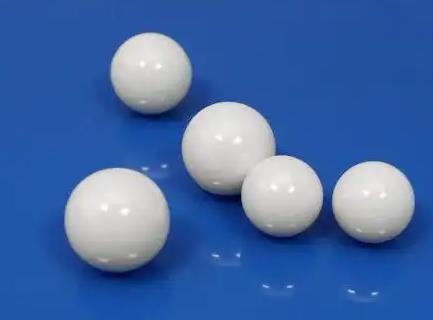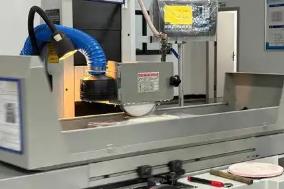How to polish zirconia ceramics
What are the polishing methods for zirconia ceramics?
There are many factors influencing the surface flatness of zirconia ceramics, which can be mainly classified into: the internal structure of the material and the degree of external processing. The internal structure of the material includes: pores, grain size, liquid phase, etc. Their effects on the surface flatness of the ceramics are as follows:

① Porosity: Since pores cause significant light scattering, the porosity should be minimized as much as possible. The causes of pores include not only insufficient sintering temperature and insufficient densification of the crystal structure, but also large defects caused by the molding process, such as the inability of the granulated powder to be crushed during sintering, resulting in the inability of the crystal grains to come close completely and thus forming pores.
② Grain size: Generally, the finer the grains, the smoother the ceramic surface. For example, the grains of zirconia grinding balls are mostly in the range of 0.3um - 0.5um, while the grains of alumina are mostly in the range of 1um - 5um. Therefore, the grains of zirconia are finer, the surface smoothness is higher, and it is also brighter than alumina ceramics.

③ Liquid phase: In general production, in order to lower the sintering temperature of ceramics, some additives are added. On one hand, this can reduce the sintering temperature of the ceramics and make the grains finer; on the other hand, the formed liquid phase will be like the asphalt used for paving roads, making the surface of the ceramics smoother and brighter.
As mentioned above, after the ceramic parts are formed and sintered, their surfaces will have many uneven peaks and valleys. Therefore, in order to improve the performance of the product, zirconia ceramics also need to undergo grinding, polishing and other operations to remove the fine surface material of the processed surface - for example, products used as artificial bones need high surface smoothness to increase lubricity. Here is the ceramic mechanical polishing process:
① Coarse polishing stage: Utilizing the mechanical action of large-sized abrasive particles to quickly remove the larger protrusions on the ceramic surface, this is achieved by shortening the polishing time.
② Semi-finish polishing stage: Using finer abrasive particles, the areas of ceramic micro-protrusions that were not removed during the rough processing are eliminated. At this point, the ceramic surface has a certain degree of smoothness, which can be suitable for some ceramic structural components with less stringent precision requirements.

③ Fine polishing stage: Under the combined action of the polishing solution and fine powder, the surface of the ceramic is polished and corrected to the surface accuracy required by the customer.
The higher the surface accuracy is, the greater the processing cost will be. However, mechanical polishing not only can precisely control the size and surface roughness of ceramics, but also can save a lot of processing costs. Therefore, mechanical polishing has become the main process for improving the smoothness of ceramics. Besides mechanical polishing, there are also chemical polishing, electrolytic polishing, ultrasonic polishing, fluid polishing, magnetic grinding polishing and electro-sonic composite polishing as the surface accuracy processing methods for precision ceramics.